Disclosure: This article contains affiliate links. We may earn a commission from purchases at no extra cost to you, which helps our travel content.
The first time I glimpsed Lake Titicaca's shimmering surface from the hillside approach to Puno, I understood why the Incas believed it to be the birthplace of the sun. At 3,812 meters above sea level, where the air thins and colors intensify, this massive lake straddling Peru and Bolivia isn't just South America's largest—it's a photographer's paradise of contrasts and contradictions. Having spent years documenting Japan's island communities, I found unexpected parallels in Lake Titicaca's floating reed islands, where the Uros people have cultivated a life between water and sky for centuries. Over one unforgettable winter week, my camera and I explored this high-altitude wonder, chasing light across its waters and documenting the intricate relationship between landscape and culture. ¡Vamos juntos! Let me guide you through capturing the soul of this mystical place, where every photograph tells a story of resilience, tradition, and breathtaking beauty.
The Golden Hours: Timing Your Shots on Lake Titicaca
If there's one thing my engineering mind appreciates, it's the predictable magic of light—and at Lake Titicaca, that magic reaches sublime heights. The thin mountain air creates extraordinary lighting conditions that transform ordinary scenes into visual poetry.
Mornings on the lake are nothing short of transcendent. I recommend rising before dawn (yes, despite the biting cold) to capture the floating islands as they emerge from darkness. Between 5:30-7:00 AM, the lake often develops a mystical fog that hovers just above the water's surface, creating ethereal conditions as the first golden rays pierce through. This interplay of light, water and mist transforms the reed islands into seemingly supernatural formations.
The Uros floating islands are best photographed during early morning when the light is soft and the reeds glow a warm honey color. My travel tripod proved indispensable here—lightweight enough to carry all day but stable enough for those crucial long exposures as light played across the water.
Sunset brings a different mood entirely. Position yourself on the Peruvian mainland facing west around 5:30-6:30 PM for dramatic silhouettes of the islands against a sky that often explodes with colors that seem almost artificially enhanced. The reflections on the still evening waters create perfect mirror images—a photographer's dream.
During my visit last winter, I discovered that midday offers its own unique opportunities, contrary to conventional photography wisdom. The intense high-altitude sun creates dramatic shadows and highlights the vivid textural contrasts between the golden reeds, azure water, and the colorful textiles worn by the islanders. Just be sure to use a polarizing filter to manage reflections and enhance those already-saturated colors.
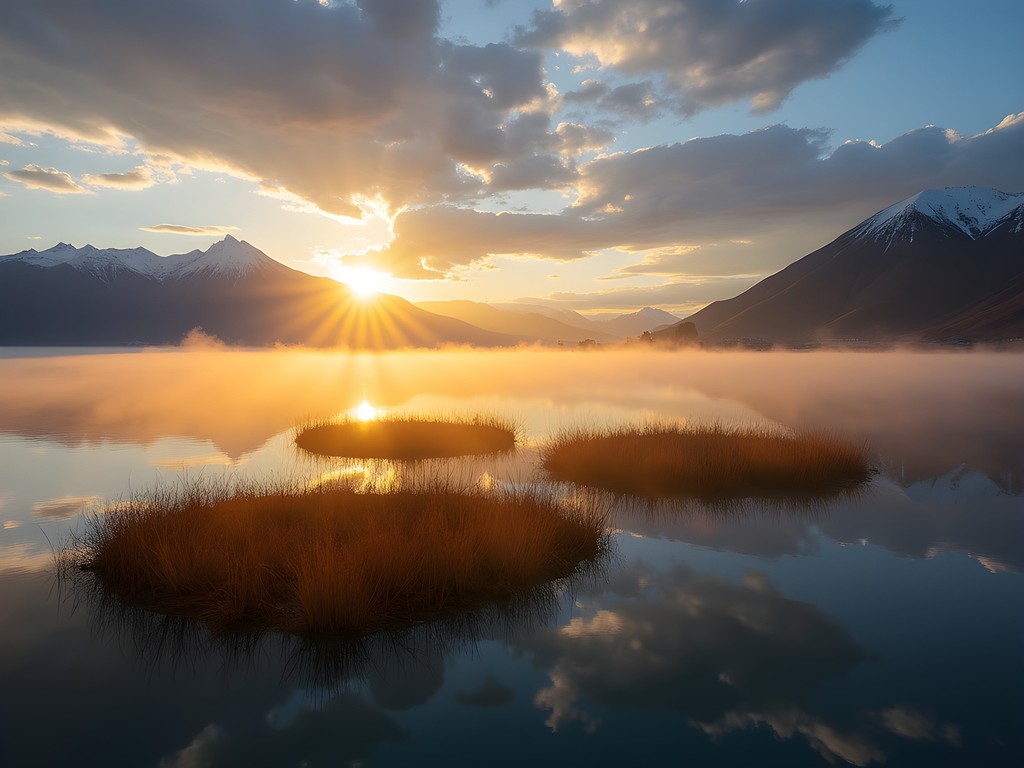
💡 Pro Tips
- Arrive at shooting locations 30 minutes before sunrise to set up equipment and scout compositions
- Use a graduated ND filter to balance exposure between bright sky and darker water
- Schedule boat trips to the islands for early morning when winds are calmest and waters most reflective
Cultural Photography: Respectful Approaches to Capturing Island Life
Photographing the communities of Lake Titicaca requires a delicate balance of artistic ambition and cultural respect—something I've learned through years of documenting diverse communities across Japan, Brazil, and India. The Uros, Taquile, and Amantani islanders aren't exhibits in a living museum; they're people with agency and privacy deserving of our deepest respect.
My approach begins with connection before collection. I spend time introducing myself—often using my limited Spanish mixed with gestures—and explaining why their way of life fascinates me. "Namaste" and "Olá" sometimes slip out before I catch myself, cultural code-switching that often brings smiles of recognition that we're all navigating multiple worlds.
Before raising my camera, I always ask permission with a simple "¿Puedo tomar una foto?" accompanied by a camera gesture. On the Uros islands, many families have become accustomed to tourism, but this doesn't diminish their right to consent. Some may request a small payment—I view this as fair compensation for what essentially becomes my artistic content.
For capturing authentic moments, my prime lens rarely leaves my camera body. Its fixed focal length forces me to physically engage with the environment rather than zooming from a distance, while the wide aperture creates beautiful depth of field that isolates subjects against the textured reed backgrounds.
The most compelling cultural photographs often emerge during activities: women weaving their brilliant textiles, fishermen casting nets from reed boats, or families cooking over open fires on their floating homes. These active moments tell stories that static portraits cannot.
When photographing children—who are naturally curious about visitors—I always get parental permission first and show them the resulting images. Some of my favorite photographs came after spending an afternoon teaching curious kids how to use my camera, then capturing their delight as they reviewed their own artistic creations.
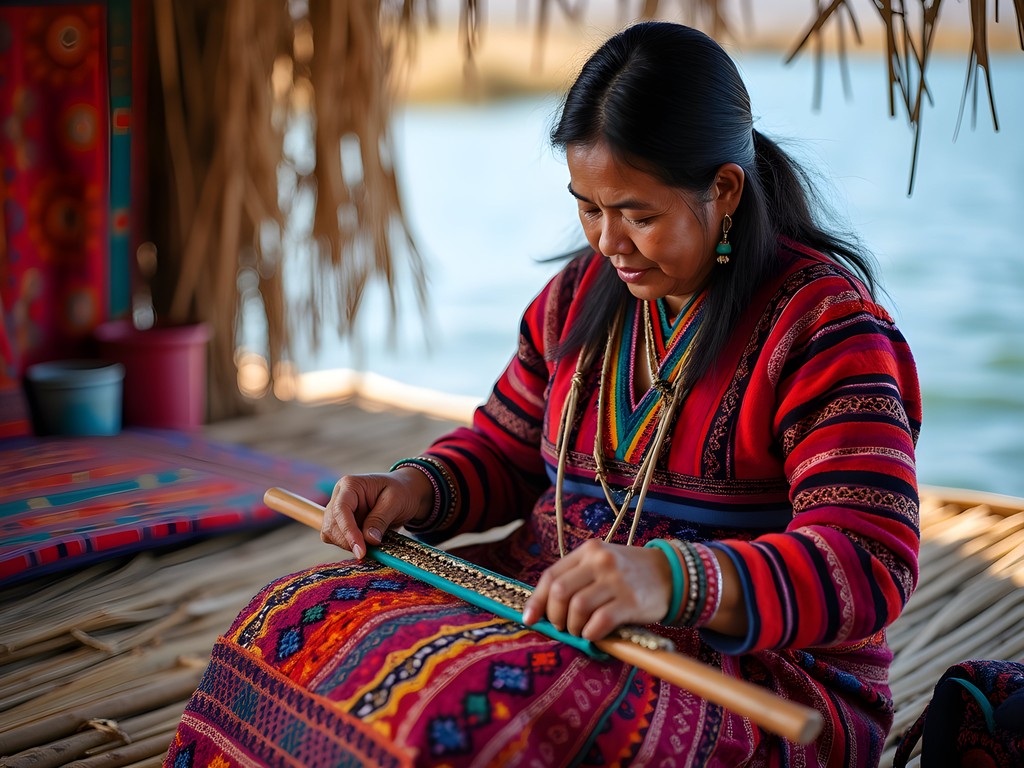
💡 Pro Tips
- Learn basic greeting phrases in Spanish and Quechua to establish respectful connections
- Offer to send printed photos to subjects when possible—many families have limited access to their own family photographs
- Consider bringing an instant camera as both icebreaker and immediate way to give back
Technical Challenges: High Altitude Photography Mastery
Lake Titicaca presents unique technical challenges that even experienced photographers might not anticipate. At nearly 4,000 meters above sea level, the environmental conditions demand both specialized preparation and adaptive techniques.
First, there's the matter of light. The thin atmosphere filters less sunlight, creating higher contrast and more intense UV exposure than at lower elevations. This affects everything from exposure settings to color rendition. I quickly learned to underexpose by about 1/3 to 1/2 stop from what my camera's meter suggested, preventing the highlight blowouts that are common in this environment. A quality UV filter becomes essential here, not just for lens protection but for managing the excessive ultraviolet light that can create unwanted color casts.
The cold presents another significant challenge, particularly during winter mornings when temperatures can hover near freezing. Batteries drain remarkably fast in these conditions—something I discovered the hard way during my first sunrise shoot when my primary battery died after just 30 minutes. I now keep spare batteries in inner pockets close to body heat and use a camera battery grip that doubles battery capacity for extended shooting sessions.
The lake's microclimate creates rapid weather changes that can catch you unprepared. I experienced brilliant sunshine, threatening storm clouds, and misty fog all within a single morning. This volatility requires both technical flexibility and physical preparation. Weather-sealed equipment is highly recommended—my weather-resistant camera bag proved invaluable during an unexpected downpour while photographing on Taquile Island.
Finally, there's the human factor: the altitude affects not just your equipment but your own physical capabilities. Slower movements, deeper breathing, and frequent rest periods became part of my shooting routine. I found that planning fewer shots but executing them more thoughtfully not only produced better results but helped manage the physical demands of high-altitude photography. Despacio y con cuidado—slowly and carefully—became my mantra, both for camera settings and personal movement.
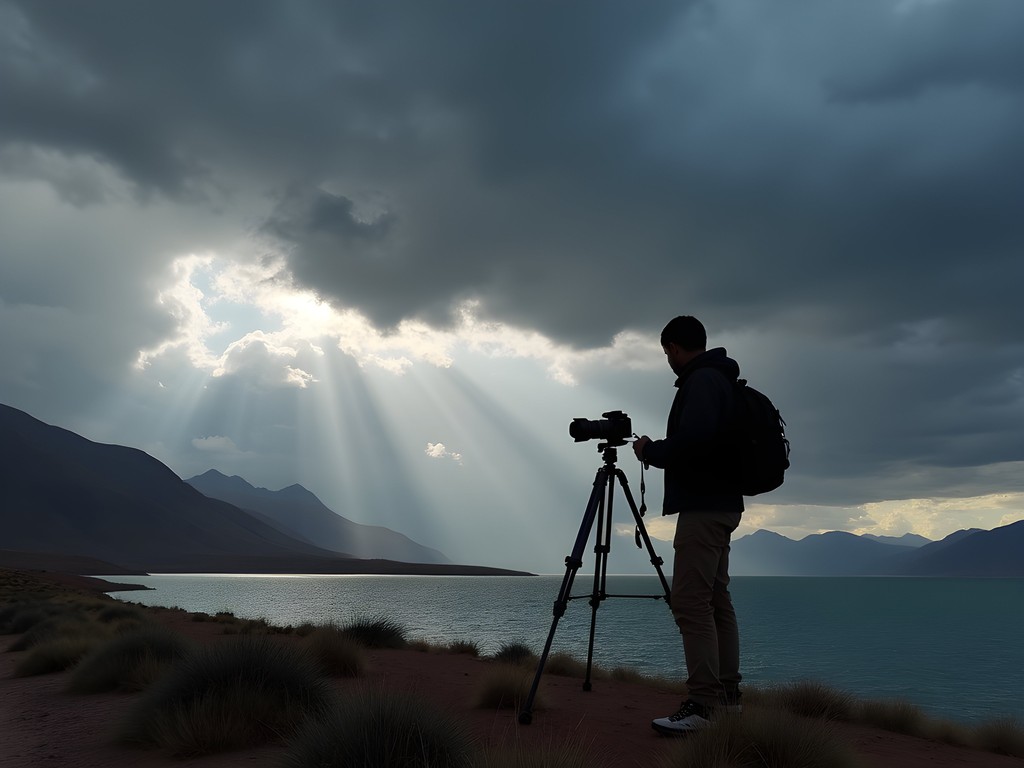
💡 Pro Tips
- Pack silica gel packets in your camera bag to combat the humidity fluctuations common around the lake
- Use lens hoods religiously to control flare from the intense high-altitude sunlight
- Consider a lightweight oxygen canister if you're not fully acclimated—clear thinking is essential for good composition
Island Hopping: A Photographic Itinerary
Lake Titicaca offers such diverse photographic opportunities that strategic planning becomes essential. After multiple trips across the lake's expanse, I've refined an itinerary that maximizes photographic potential while respecting local communities and managing the physical demands of high-altitude travel.
Day 1-2: Uros Floating Islands Begin with the iconic floating reed islands closest to Puno. While these receive the most tourists, they're still visually extraordinary. I recommend booking an early departure (around 7:00 AM) to arrive before the larger tour groups. The morning light creates a golden glow on the reeds that's simply magical. Focus on wide-angle environmental shots that capture the relationship between the islands and the vast lake, then transition to detail work highlighting the intricate reed construction techniques.
For a more authentic experience, arrange an overnight homestay on one of the more distant floating islands. After day-trippers leave, you'll witness how dramatically the atmosphere changes as families return to their normal routines. Some of my most meaningful photographs came during these quiet evening hours when daily life unfolds naturally.
Day 3-4: Taquile Island Taquile offers a striking contrast to the Uros—a solid island with terraced hillsides and stone pathways instead of floating reeds. The island is renowned for its textiles, declared Masterpieces of the Oral and Intangible Heritage of Humanity by UNESCO. The men knit while walking (a fascinating sight) while women weave extraordinary belts and garments.
The island's highest point provides 360-degree panoramic opportunities at sunrise and sunset. During midday, focus on the cultural elements and detailed textile work. My macro lens proved invaluable for capturing the intricate patterns and textures of the world-class textiles produced here.
Day 5-6: Amantani Island Less visited than its neighbors, Amantani offers the most immersive cultural experience. Arrange a homestay with a local family for authentic access to daily life. The island has two peaks, Pachatata (Father Earth) and Pachamama (Mother Earth), both topped with ancient ceremonial sites that provide spectacular sunrise and sunset vantage points.
Day 7: Bolivian Shore (Optional Extension) If time permits, cross to Copacabana on the Bolivian side for a completely different perspective. The Basilica of Our Lady of Copacabana creates striking architectural elements against the lake backdrop, while the Island of the Sun offers ruins dating back to Inca times with extraordinary light quality in late afternoon.
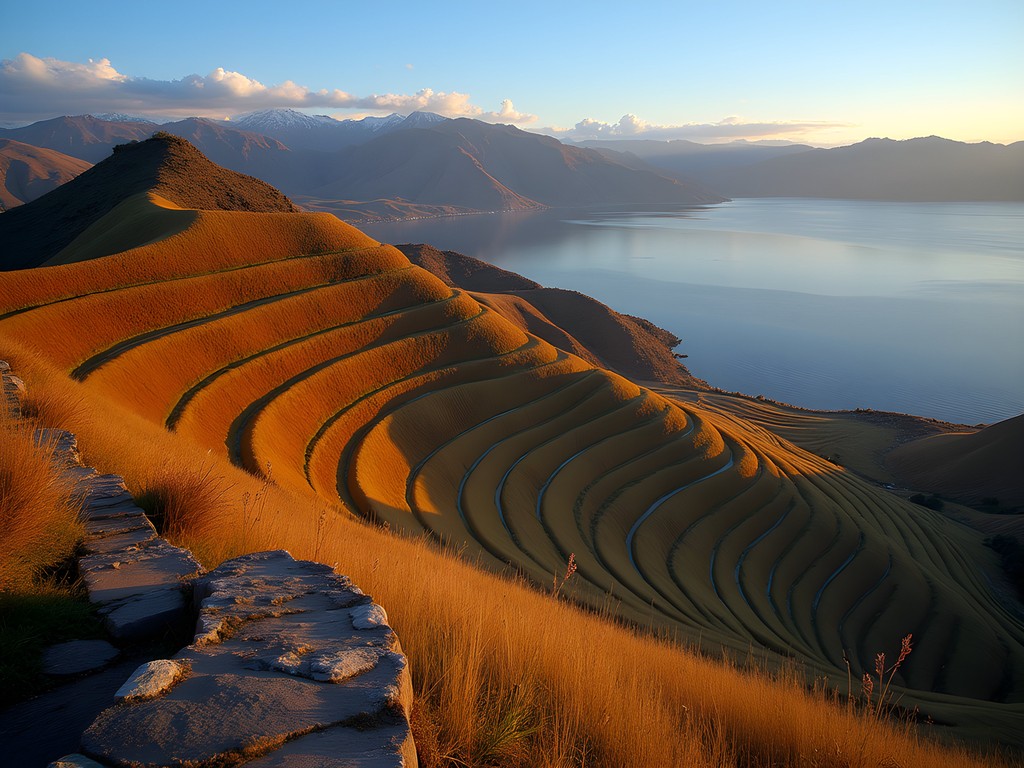
💡 Pro Tips
- Book homestays through community cooperatives rather than large tour operators to ensure fair compensation to families
- Bring small prints of your best work to leave with homestay families as a gesture of appreciation
- Allow buffer days in your schedule for weather contingencies—some of the best photographic conditions come after storms clear
Compositional Techniques for Reed Islands and Cultural Portraits
The visual complexity of Lake Titicaca—where natural elements meet cultural expression—demands thoughtful compositional approaches. Drawing from both my engineering precision and artistic sensibilities, I've developed techniques specifically tailored to this unique environment.
Reed Island Compositions The floating islands present fascinating geometric possibilities. Their organic circular forms create natural framing elements when viewed from above, while the textured reed surfaces offer compelling foreground interest from ground level. I found that applying the classic rule of thirds often felt too rigid for these organic spaces. Instead, I gravitated toward more circular compositions that echo the islands' forms.
One technique I discovered accidentally but now use intentionally: including the edges of the islands in wide-angle shots to emphasize their floating nature. This creates a visual tension between stability and impermanence that captures their essence. The contrast between the golden reeds and the deep blue water creates natural color harmony that requires minimal post-processing.
For more abstract work, get low to the reed surface and shoot across it during golden hour, when the light catches each individual reed fiber. The resulting images highlight textures and patterns that tell the story of these remarkable hand-built environments.
Cultural Portraiture The people of Lake Titicaca have faces that carry the history of the Andes—dignified, weathered, and immensely expressive. When creating portraits, I've found that environmental context adds essential narrative elements. Rather than isolating subjects against neutral backgrounds, I position people within their daily contexts: beside reed homes, working with traditional tools, or framed by doorways that show both subject and environment.
The vibrant textiles worn by local communities provide extraordinary color elements that can elevate portraits. I often position subjects so that a hint of Lake Titicaca appears in the background, connecting person to place in a single frame.
Lighting these portraits requires sensitivity to the harsh high-altitude conditions. I carry a small collapsible reflector to soften shadows during midday shooting, though the most flattering natural light comes during the first and last hours of daylight when the sun casts a golden glow that complements the warm skin tones of the indigenous communities.
When photographing traditional activities like reed cutting, fishing, or weaving, I've found that a documentary approach yields more authentic results than posed shots. Patience becomes your greatest asset—waiting quietly until subjects become comfortable with your presence allows genuine moments to unfold naturally before your lens.

💡 Pro Tips
- Use leading lines created by reed pathways to draw viewers into your compositions
- Incorporate reflections in still morning waters to create symmetrical compositions with islands
- For portraits, shoot slightly from below eye level to create a sense of dignity and presence
Final Thoughts
As my boat pulled away from the shores of Lake Titicaca on that final crisp winter morning, I found myself scrolling through my camera's memory card—not just reviewing images, but reliving moments of connection that transcended language and culture. What began as a photographic expedition evolved into something far more meaningful: a journey through living history, where ancient traditions breathe alongside contemporary challenges. The photographs we create here carry responsibility—they tell stories of communities adapting and persisting at the roof of the world. Whether you're documenting the geometric marvel of reed islands floating on mirror-like waters or capturing the dignified gaze of an elder weaver, approach this place with both technical preparation and open-hearted respect. Lake Titicaca doesn't just offer photographic opportunities; it offers perspective—on resilience, on human ingenuity, and on our relationship with the natural world. Até a próxima aventura, amigos—until the next adventure!
✨ Key Takeaways
- Morning mist and golden hour create magical lighting conditions that transform ordinary lake scenes into extraordinary photographs
- Respectful interaction should precede photography—take time to connect with communities before capturing their images
- High altitude creates unique technical challenges requiring specialized preparation for both equipment and photographer
- The most compelling images of Lake Titicaca capture the relationship between people, water, and the floating environments they've ingeniously created
📋 Practical Information
Best Time to Visit
May-September (winter dry season)
Budget Estimate
$75-150 per day including accommodation, food, transportation and guides
Recommended Duration
7 days minimum, 10 days ideal
Difficulty Level
Moderate (Altitude Considerations)
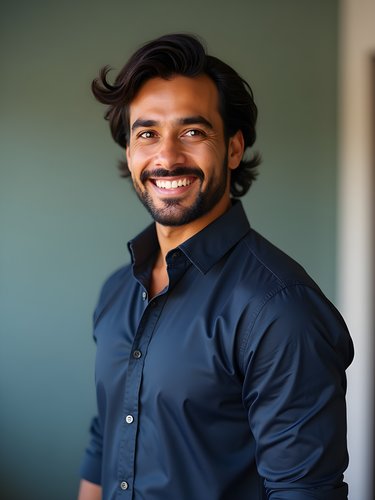

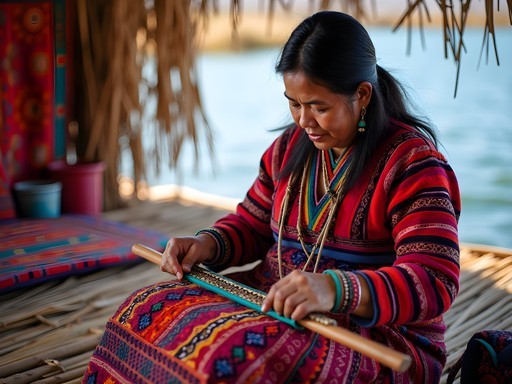
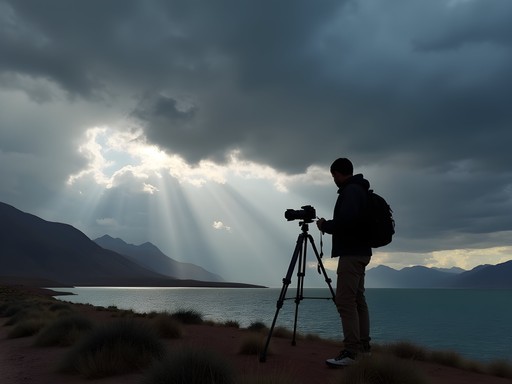
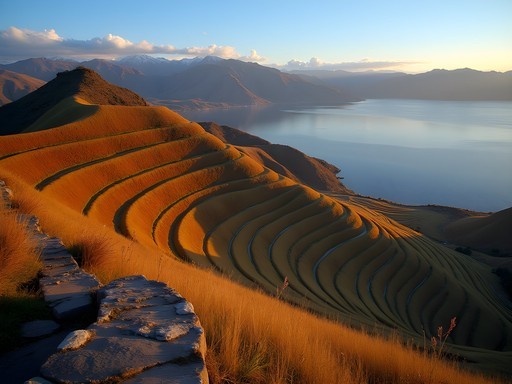
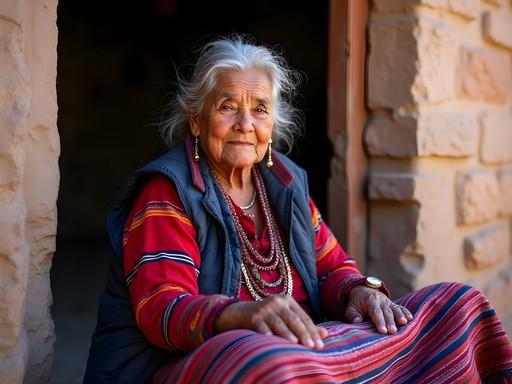










Comments
waveblogger
Just got back from Titicaca last month! For anyone planning a trip, don't miss Taquile Island for photography - fewer tourists than Uros and amazing terraced landscapes. The hike up from the dock is brutal at that altitude though, so take it slow. Also worth staying overnight on Amantani if you can - the stargazing opportunities are insane with that elevation and clear mountain air.
summerguy
Did you have any altitude sickness issues? That's my biggest worry.
waveblogger
Definitely felt it the first day! Spend 2 days in Puno or Copacabana before hitting the islands. Coca tea helps and just take everything super slow.
Sophia Gomez
Marco, your section on respectful cultural photography really resonated with me. When I visited Lake Titicaca last year, I made the mistake of just snapping away before establishing any connection with the Uros islanders. One elderly woman gently but firmly gestured for me to put my camera down, and it completely changed my approach. I ended up spending the afternoon helping her with her weaving (badly, I might add!), and the photos I took later with her permission are some of my most treasured. That genuine connection makes such a difference in the final images. Your tip about learning basic Quechua phrases is spot on - even my terrible pronunciation brought smiles and opened doors. Beautiful guide that goes beyond just technical advice!
photogal
Any specific camera settings you'd recommend for the high altitude? I'm heading there next month and worried about the exposure with that intense mountain light.
Marco Sharma
Thanks for asking! The light is definitely tricky - I found underexposing by about 1/3 to 1/2 stop helped preserve highlights. Also, bring extra batteries as they drain faster at altitude. The polarizing filter mentioned in the post is absolutely essential for those water reflections!
photogal
Super helpful, thanks Marco! Just ordered a polarizing filter for the trip.
summerguy
Those golden hour shots are incredible! The colors reflecting off the lake are something else.
Sophia Gomez
Right? Marco really captured the magical quality of the light there. Makes me want to book a trip immediately!
summerguy
Already looking at flights for next spring lol
altitude_rookie
How many days did you acclimatize in Puno before heading out on the lake? I've heard mixed advice about this.
Jean Wells
Not the author, but I'd recommend minimum 2 full days in Puno. Many travelers arrive from Cusco thinking they're already acclimatized, but the additional 1,000+ meters makes a significant difference. Hydration and moderate activity are key.
PeruAdventures2025
Pro tip for anyone heading to the floating islands - bring small prints of photos you've taken elsewhere to share with locals. Creates amazing connections and they often become more open to being photographed after that exchange.
Marco Sharma
This is brilliant advice! Wish I'd thought of that. Creating that two-way exchange makes all the difference.
coffeehero
Those blue skies against the yellow reeds... spectacular shots!
winterking
Just got back from Titicaca last month and wish I'd seen this guide before going! The altitude really messed with my camera skills - my hands were shaking more than usual and I didn't bring enough batteries. They drain so much faster at high elevation! One tip I'd add is to bring a lightweight tripod for those sunrise shots. I used my travel tripod which was perfect since it's sturdy but doesn't add much weight to your pack when hiking around the islands. Marco, did you visit both the Peruvian and Bolivian sides? I found the Bolivian side less crowded for photography but the Peruvian floating islands were more photogenic.
coffeehero
So true about the batteries! Mine died twice as fast up there.
Marco Sharma
I only had time for the Peruvian side this trip, but hoping to explore the Bolivian side next time! And yes on the tripod - essential for those low-light conditions!
wanderlustmate
This guide is exactly what I needed! I'm heading to Peru in two months and Lake Titicaca is on my itinerary. Did you find it difficult to navigate between the different islands? And how did you approach asking locals if you could photograph them? I always get nervous about that part.
Marco Sharma
Getting between islands is pretty straightforward - there are regular boat services, or you can join a tour. As for photographing locals, I always make eye contact, smile, and gesture to my camera with a questioning look. Learning a few basic phrases in Spanish helps tremendously. And if they say yes, show them the results and maybe offer a small tip if appropriate. The respect goes a long way!
Riley Griffin
Marco, this brings back so many memories! We took our kids (12 and 14) to Lake Titicaca last year and they were absolutely mesmerized by the floating islands. Your advice about the golden hours is spot on - we got some magical family shots at sunset near Taquile Island. One thing I'd add for families: bring extra layers for the kids during those early morning shoots. My daughter's hands were so cold she could barely adjust her camera settings! Also found that letting the local children see their photos on our camera screens created wonderful interactions and smiles. Did you experience any altitude issues while shooting? My gear felt twice as heavy after climbing those island hills!
Marco Sharma
Great point about the layers, Riley! And yes, the altitude definitely made my camera bag feel like it was full of rocks. I found taking it slower and staying extra hydrated helped a lot. Love that tip about showing photos to the local kids - those genuine smiles are priceless.
wanderlustmate
Riley, did your kids have any issues with the altitude? Planning to take my 10-year-old next spring and a bit nervous about that.
Riley Griffin
@wanderlustmate They did feel it the first day - slight headaches and fatigue. We spent 2 days in Puno before heading to the islands which helped them adjust. Lots of water and taking it easy made a big difference!
Venture X
Premium card with 2X miles, $300 travel credit, Priority Pass